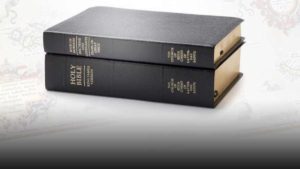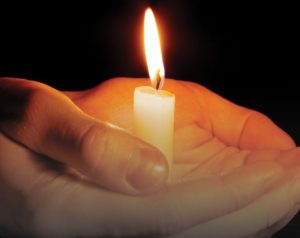Shortly after Canon Denis Tighe became Parish Priest of Ballymote in 1848, he set about planning for a new church for the parish. Many fine churches were being built around the Diocese at this time under the guidance of the bishop, Dr. Patrick Durcan. The architect appointed for designing the new church was George Goldie of the well known London firm of Hadfield and Goldie. He had designed many churches in the country including the Cathedral in Ballaghaderreen and later Gurteen Church. The site for Ballymote church was granted, free of rent, by Sir Robert Gore Booth. He owned the town at the time and he was grandfather of Countess Markievicz. The church was designed in neo-gothic style to be built in an east-west direction. Churches were built in this direction at the time, so that the people faced East as they worshipped. The rising sun symbolised new life and resurrection. People were buried facing east for the same reason.
Mr Charles Barker was appointed contactor. He was contractor for the Cathedral in Ballaghaderreen and for Gurteen church. Ballymote church is 143ft long 54ft wide and 58ft high.
The Foundation Stone
The site was prepared and everything was ready for the laying of the foundation stone on Wednesday,12th October, 1859.This was preceded by a High Mass in the old church( the present Loftus Hall) at which the bishop, Dr. Durcan, presided and at which Dr. Terence O’Rorke, P.P. Collooney, preached.
Some days previously, a Protestant gentleman, Mr. Jackson,who was engineer on the Railway line which was being laid at the time, had asked to prepare the 17cwt. foundation stone and his men had it shaped and ready.Mr. Jackson gave his men a holiday so that they could attend the ceremony of the laying of the foundation.
Church Funds.
The estimated cost of the building was 2,743 pounds. Most of this money had to be collected from outside the parish…..from all parts of Ireland, from England, Scotland, the U.S. and Canada, as there was a lot of poverty in the West of Ireland at that time. Canon Tighe travelled widely in an effort to collect funds. He also had many letters published in the ‘Sligo Champion’ at the time acknowledging money received and reporting on the progress of the building. One of his letters is as follows:
‘Dear Sir,
Availing myself of your usual kindness, I beg to acknowledge receipt of 1punt from Mr. Pat Kean, merchant, New York, as his second subscription towards the funds I am collecting to build our new church in Ballymote. Mr Kean is a native of this rising town. The building of our beautiful gothic church is progressing most favourably .The staff of mechanics and labourers is now so large that it will take over 40pounds a week to pay them, but I hope that we will be able to push on with the work and leave the walls in a good way before winter overtakes us’ D.Tighe,P.P.
On the 7th January, 1860, he acknowledged receipt of 21-4-0 from Austin Mullarkey, Augusta, Georgia. The building of the church and the railway gave much needed employment to the people of the parish.
Mr.Goldie’s Letter
A letter written to Canon Tighe by Mr. Goldie was published in the Sligo Champion on 29th June,1861. It read:
‘Dear Canon Tighe,
I have the honour to report to yourself and Committee upon the state of your new church……. I have gone most carefully over all the work this day and am happy to record my general satisfaction with the manner in which Mr. Barker, our contractor, has carried out my plans and specifications to the present time……..The unfortunate strike of the masons, for which Mr. Barker is in no wise answerable, has thrown back the progress of the works but I have urged upon him the importance of pushing on during the fine weather and so make up for lost time as much as possible. The first division of the contract is now approaching completion, It was to include excavation, masonry and cut-stone work and to cost 1515 pounds. To this amount is added, by your desire and instructions, stone arches for 100 pounds and a portion of the tower for 260 pounds, making in all 1875 pounds. Of this Mr. Barker has drawn 1,683-10-0, leaving a balance of 191-10-0, to complete the arches, clerestory, west rose window and chancel window and arch.
But to this balance may be added the value of the roof to sacristy and porch, slates, lime, barging etc.,on the ground, which may be estimated at 50 pounds and which belong to the second portion of the contract, so that you have a sum, or an equivalent for 241-10-0, to complete the first portion of the contract, the value of which is about 199 pounds.
The important point now to be decided and that as speedy as possible is that of carrying on the second portion of the contract, namely, roofing and slating to which was apportioned the sum of 868 pounds. Your present chapel is in a dangerous and unfit state for divine worship. The walls of the new church if left exposed for the winter will be sure to suffer from wet and wind….. I cannot conclude without expressing the feelings of satisfaction with which I see the manner in which the church is working out and I feel convinced that when completed it will prove an ornament and credit to the county and parish. G.Goldie, Architect.
Contributions for the roofing of the church soon began to come in to Canon Tighe after the publication of this letter. These were acknowledged in later editions of the ‘Sligo Champion’, for example, the munificent sum of 25-1-5, from Mr. Charles Kerins, St.Catherine’s Canada West. A List of U.S. contributors gave in all $122. Canon Tighe, travelling North to collect funds, expressed his gratitude to the people of Donegal especially, for their generosity.
John Smith of Smith&Knight, Railway contractors, Sligo, offered to convey all the timber and slates required for the roofing, free of charge. Many of those employed on the construction of the railway to Sligo contributed on a regular basis to the church fund.
Dedication of the new Church
By September, 1864, work on the new church had advanced sufficiently for its solemn dedication and official opening on Sunday,4th September. The ‘Freeman’s Journal’ of the following day carried a report of the event as follows:
“The new Catholic Church of Ballymote was this day dedicated to the worship of the Most High by the Rev. Dr Durcan, Lord bishop of Achonry, with all the solemnity and splendour prescribed by the ritual for so important and sacred a proceeding. It was an event long looked forward to in this district of the County Sligo, and indeed throughout the whole country……. The new church which is dedicated to the Blessed Virgin and Her Immaculate Conception, is one of the most spacious, most substantial, and at the same time one of the handsomest temples of Catholic worship to be found in the country districts of Ireland……. The style of architecture is pure gothic; the arches and pillars separating the nave from the aisles are remarkably elegant in outline and the windows and doorways also give evidence of their graceful design. Beside the principal entrance is a massive square tower and near it is a fine copy of an Irish round tower. To the able, indefatigable and sincerely beloved pastor of the parish, the Very Rev. Canon Tighe, the highest credit is due for his great and unwearied efforts……. His admirable and devoted people are worthy of a share in the honour, for they zealously co-operated with their pastor in all his labours. The old chapel, which up to today served the spiritual wants of the parish, stands within a few feet of the new church and looks even more poverty – stricken than ever.
The hour appointed for the commencement of the sacred ceremonial was 11.30 am, but long before that time the church and the approaches to it were crowded with a vast congregation…… Special trains from the direction of Mullingar, and Longford on the one side, and from Sligo on the other brought considerable numbers of people and a great many availed themselves of Bianconi’s cars, specially run to come in from other districts.
There was a very influential attendance of the Catholic gentry and principal farmers of the district. Amongst those present were-Charles and Mrs. Strickland,Loughglynn House, the Marquis Assass and Mr. Farrell; Thomas and Mrs. Strickland, Castlemore; M.J.MaddenEsq. And Mrs. Madden, Camphill House, Mr.andMrs. Jervis; Edward Farrell Esq.J.P. Carrickbanagher; George Goldie Esq. London(the Architect); Miss O’Connor and Mrs. McDermot; R.SpringEsq. Dublin;James Tighe Esq.Sligo; Edward Tighe,Esq. Ballymote; the Misses McGettrick, Kilturra; Daniel Milmoe,Esq. Messrs. O’Brien, Ballymote.
The procession of clergy, acolytes etc., preceded by the processional cross emerged from the sacristy and went down the centr of the church and to the exterior by the great door. The Lord Bishop of the diocese was robed in full pontificals. His Lordship was attended by the Rev. Dr McHale, of the Irish College, Paris. As the procession moved around the interior and exterior of the church and the prescribed psalms and litanies were chanted by the clergy, His Lordship performed the dedication ceremonial.
Amongst the clergy were the Very Rev. Canon Tighe,P.P.; Very Rev.Dr. O’Rorke,P.P. Collooney;Rev.Thomas Fitzgerald, P.P.Newtownforbes; Rev.C.Cosgrave,P.P. Keash; Rev. Roger Brennan, P.P. Tubbercurry;Rev. James Higgins,P.P. Charlestown; Rev. George Gearty,P.P.(diocese of Ardagh);Rev. Dr. Costelloe,P.P. Crossmolina; Rev. James Henry,P.P.Buninadden; Rev. Mark Cooke,C.C.do; Rev.D. O’Grady,C.C. Keash;Rev. Dr. Goodman,O.S.D. Sligo; Rev. Mr. Lohall, Collooney.
Upon the return of the procession to the sanctuary, the High Mass commenced. The Rev. Luke Hannan was celebrant and the deacons were the Rev. M. Cooke,and the Rev. Roger O’Hara, Ballaghaderreen. The Archbishop of Tuam, Dr. John McHale, preached after the gospel.
Benediction was given by the bishop of Achonry after the Mass and the congregation soon after dispersed to their homes.
On Sunday 27th January 1884, the High Altar was consecrated. The marble altar, communion rails and pulpit were erected during the past month. ( Sligo Champion 1884)
Father Andrew Dunleavy………..the Catechism Priest (1680-1746)
One of Ballymote’s most illustrious sons, Andrew Dunleavy was born in Ballymote in 1680 and he received his early education at the local hedge school. He went to the Irish College in Paris and studied there obtaining his LL.D degree. After his ordination he was appointed Prefect of the Community of clerics and scholars in the College des Lombards(Irish College) in Paris in 1722 and presided over it for 24 years. He was the founding father of the institution. He was a great scholar and his greatest work was ” The Catechism of Christian Doctrine” a large volume written in both Irish and English which contained a full treatise on the teaching of the Catholic Church.It ran into several editions and was widely used in schools and seminaries in the 18th and 19th centuries. Copies of it are still available in libraries. Father Dunleavy died in Paris in 1746 and was buried at the Lombard College in Paris.
1823-1832 Fr.Patrick Durcan, later bishop of the diocese. Some of the parishioners resented his coming to Ballymote parish and they planned an attack on his life one day while he was dining with Fr.Fitzmaurice of Keash. They changed their minds at the last moment, however, and spared his life.He later became one of the greatest bishops of the diocese.Churches were built in the diocese under his guidance,including the church in Ballymote which was dedicated in 1864 and the Cathedral in Ballaghaderreen(Dedicated in 1860).
Fr. Durcan was succeeded by Fr. Brian O’Kane as P.P. He died on Aug.7th 1848 and his body was re-interred in the new Church in 1876.
Canon Denis Tighe succeeded as P.P.(1848-1876)He built the present church.




